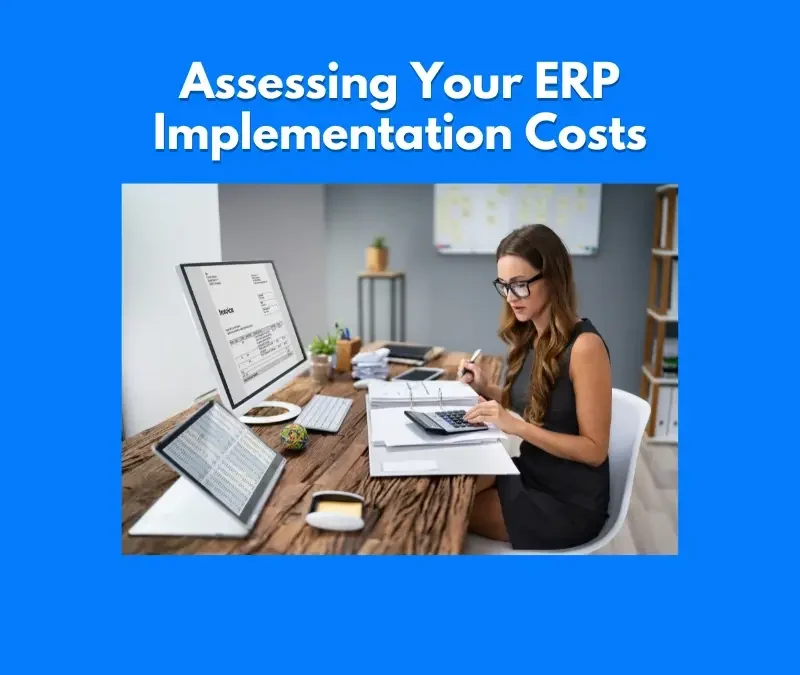SAP Articles
The $50 Billion ERP Failure: Why CFOs Still Reach for Excel Instead
Noel DCosta
- Last Update :
Despite spending millions of dollars on ERP failures, 88% of organizations today still rely on Excel for core business functions. In boardrooms and back offices, Excel is not just alive, it’s thriving.
The issues of Rigid reporting, complexity and the lack of flexibility of ERPs coupled with the comfort provided by familiar tools like Excel, drive this behavior.
When systems fail to deliver intuitive insights, users default to what they know best. This situation represents a major failure in ERP implementation strategies.
Most companies spend millions on ERP systems but still rely on Excel for financial work.The disconnect happens because ERP implementations focus on technical specs rather than solving actual business problems.
The Scope of the Problem
The ERP market rakes in about $50 billion annually. Companies spend millions on these systems that promise to kill off spreadsheets and manual work. It is safe to say that this concern is stated in every single business case I have seen.
But let’s be practical – spreadsheets still run the show for financial planning, inventory tracking, and forecasting almost everywhere. The gap between promise and reality is huge.
I’ve worked with several Fortune 500 companies that openly admit they use Excel for crucial stuff – financial audits, executive reports, even running payroll calculations.
The logistics supervisor of one of my manufacturing clients told me that his team exports their ERP data to Excel every week for inventory planning, even though they paid a fortune for their fancy planning modules, which had the best dashboards in reporting.
This creates real problems with data accuracy, version control, and audit trails. So much for ERP failures.
Why Excel Won't Die

Excel refuses to die for several good reasons. First, familiarity – everyone’s been using it for decades. There’s zero learning curve compared to complex ERP interfaces.
Flexibility is important too. Excel lets users create exactly what they need without being locked into rigid ERP templates and workflows. I’ve watched users build complex models in Excel that would take months to configure in their ERP.
Speed matters in business. Excel gives immediate results without ERP changes. If you want to change a calculation? Just edit the formula. No change request needed. Really simple!
Control is perhaps the biggest factor. Decision-makers trust what they can see and manipulate themselves. They understand Excel and not what happens inside the ERP black box.
Why Excel Won’t Die
| Reason | Explanation | Business Context |
|---|---|---|
| Ubiquity | Installed on nearly every business machine; universally recognized interface. | Used across industries, departments, and roles as the default data tool. |
| Low Barrier to Entry | Minimal training required for basic use; no programming needed for simple tasks. | Preferred by non-technical users to create and manipulate reports on demand. |
| Flexibility | Supports unstructured workflows, ad hoc analysis, and custom logic. | Often used to bypass system limitations or delays in enterprise system changes. |
| Speed of Execution | Enables rapid prototyping and immediate visibility of results. | Used during early project phases or when IT backlogs prevent timely report updates. |
| No Approval Process | Spreadsheets can be created and distributed without IT or compliance review. | Departments often build “shadow systems” for operations or finance workarounds. |
| Extensive Ecosystem | Supports add-ins, scripting (VBA), and third-party automation tools. | Used in integration with ERP extracts, budgeting models, and audit templates. |
| Familiarity at the Executive Level | Executives often rely on Excel personally and expect outputs in spreadsheet format. | Dashboards and reports are often reworked into Excel before final distribution. |
| Backup for System Gaps | Used to fill in missing functionality in enterprise tools. | Excel becomes a parallel system for planning, forecasting, or reconciliations. |
All about ERP Failures: ERP's UX Problem
Most ERP systems are complex, clunky, and just not unintuitive. The interfaces look like they were designed in the 90s, because many were! Now you do have some of the sassy cloud options, and yet you can’t change much in public cloud.
I’ve watched smart, tech-savvy employees struggle with basic ERP functions while they fly through Excel tasks. Change management costs a fortune and training takes weeks, but people forget what they don’t use regularly.
The Risks of Spreadsheet Dependency
Excel dependency creates serious business risks. Human error tops the list – The infamous “London Whale” disaster where Excel formula errors helped cause $6 billion in trading losses, is well known.
Data silos kill collaboration and visibility. When important information sits on people’s laptops, you lose real-time insights. Compliance issues are a nightmare. During audits, companies can’t prove data integrity with dozens of spreadsheet versions floating around.
Risks of Spreadsheet Dependency
| Risk Area | Description | Business Impact |
|---|---|---|
| Human Error | Manual entry, copy-paste mistakes, and formula errors are common and hard to detect. | Inaccurate reporting, incorrect decision-making, financial discrepancies. |
| Version Control Issues | Multiple conflicting versions stored locally or emailed between users. | Data inconsistency, duplicated efforts, approval delays. |
| Lack of Audit Trail | No formal change log or user activity history in standard spreadsheets. | Inability to trace errors or prove compliance in audits. |
| Scalability Limitations | Spreadsheets cannot handle large, real-time, or multi-user datasets efficiently. | Operational delays, system crashes, outdated data snapshots. |
| Security Gaps | Spreadsheets are often unsecured, shared freely, and lack role-based access. | Data breaches, exposure of sensitive financial or customer information. |
| Dependency on Key Individuals | Only certain users understand how specific spreadsheets work. | Knowledge silos, business disruption when key staff leave or are unavailable. |
| Lack of Integration | Spreadsheets operate in isolation from core business systems (ERP, CRM). | Duplicate data entry, delays in reporting, poor cross-functional visibility. |
| No Real-Time Data | Spreadsheets are static and rely on manual refreshes or imports. | Outdated information drives incorrect forecasts and operations decisions. |

See How I Make Your ERP and AI System Selection or Implementation right for you.
ERP & AI System Selection – Identify and choose the right ERP or AI-enabled platform to fit your business needs.
Project Support & Recovery – Keep your project on track or bring failing implementations back under control.
ERP Modernization – Transform existing ERP systems to modern, efficient, and scalable ERP environments.
GET IN TOUCHCan ERP Replace Excel?
Cloud-native ERPs are finally trying to add spreadsheet-like interfaces. Systems like Workday, SAP Analytics Cloud and NetSuite have Excel inspired features built right in.
We’re also seeing some interesting hybrid tools pop up as well. Google Sheets with API connections. Low-code platforms that feel familiar to Excel experts.
But is a complete replacement ever going to happen? I don’t think it will happen anytime soon without a major cultural shift. Excel skills are deeply embedded in business operations. Most companies would be better off accepting this reality rather than fighting it.
Ways ERP Can Replace Excel
| Use Case Typically Handled in Excel | ERP Replacement Functionality | Business Benefit |
|---|---|---|
| Budget Planning | Integrated financial planning modules (e.g., SAP BPC, Oracle PBCS) | Centralized control, auditability, and version tracking of budget cycles. |
| Manual Sales Tracking | ERP sales and CRM modules with real-time dashboards | Live data eliminates lag; increases sales forecast accuracy. |
| Inventory Reconciliation | Real-time inventory management in ERP (e.g., SAP MM, Oracle SCM) | Avoids duplicate counts, ensures visibility across locations and teams. |
| Employee Time and Resource Logs | Time tracking in ERP HCM or integrated workforce systems | Improves compliance and cost allocation to projects or departments. |
| Purchase Order Tracking | Purchase management modules with approval workflows | Reduces maverick spend; ensures supplier and delivery alignment. |
| Data Consolidation from Multiple Sources | Data warehousing and reporting tools within ERP (e.g., SAP BW, Oracle OTBI) | One version of the truth; eliminates cross-team inconsistencies. |
| Project Status and Milestone Tracking | Project management functionality embedded in ERP | Live visibility into task completion and budget impact. |
| Custom Calculations and KPI Reports | ERP-native dashboards and KPI models (e.g., SAP Analytics Cloud) | Consistent reporting logic; eliminates formula errors and duplication. |
| Vendor Payment Schedules | Accounts payable and payment scheduling in ERP financials | Avoids missed payments, automates due-date prioritization and cash flow planning. |
| Team Resource Allocation Spreadsheets | Capacity planning and role assignments in ERP project systems | Optimized resource usage with fewer bottlenecks and overlapping tasks. |

My Closing Thought
ERP systems may manage your business, but spreadsheets still manage your people. This is the reality.
The most successful companies integrate Excel rather than fight it. They build boundaries around spreadsheet use and focus on data integration.
Is the goal to replace Excel—or finally accept it as part of the system? You tell me.
If you have any questions, or want to discuss a situation you have in your SAP Implementation, please don't hesitate to reach out!









